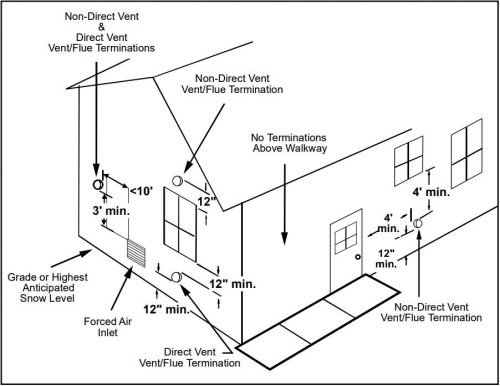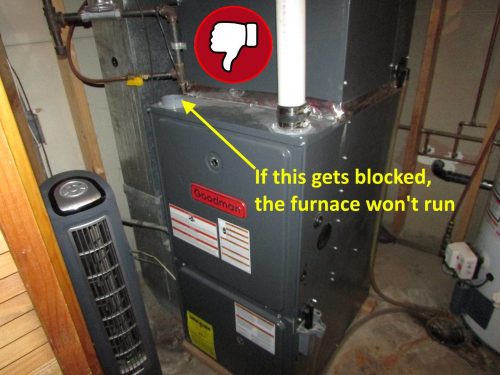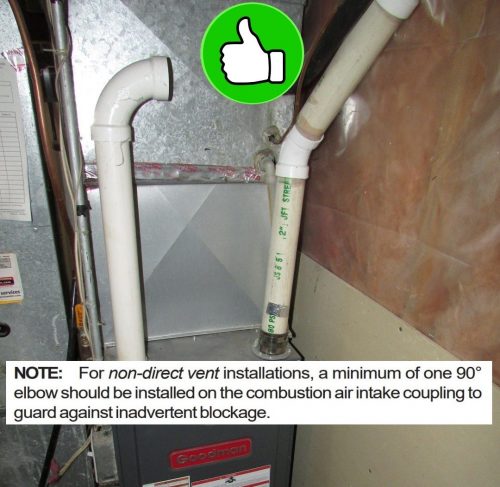It’s perfectly acceptable to install a high-efficiency furnace with one pipe. Just flip through the pages of any high-efficiency furnace installation manual, and you’ll find the answer. I’m blogging about this because many homeowners have asked me about it.
And now the rest of the story.
Why Two Pipes
High-efficiency furnaces come with two pipes; one pipe brings combustion air directly into the furnace and mixes it with fuel. The other pipe exhausts the combustion gases directly to the outdoors. Both of these pipes are directed to the outdoors at about 95% of the furnaces that I inspect in Minnesota. In these systems, the furnace obtains all of its combustion air directly from the outdoors and exhausts the combustion byproducts directly to the outdoors. A two-pipe system like this is called a direct-vent appliance.
I often hear the terms “direct-vent” and “sidewall-vent” confused. The 2020 Minnesota Fuel Gas Code definition of a direct-vent appliance is “Appliances that are constructed and installed so that all air for combustion is derived from the outdoor atmosphere and all flue gases are discharged to the outdoor atmosphere.” In other words, it is a two-pipe system. A one-pipe system can be sidewall-vented but will never be a direct vent.
Side note: a concentric vent looks like a one-pipe system, but it’s really one pipe inside of another. This is still a two-pipe system.
A two-pipe system is preferable because the furnace won’t have to use heated indoor air for combustion, so conditioned indoor air is not wasted.
Another benefit to a two-pipe system is added flexibility in the installation. When the furnace gets its combustion air from the outdoors, you don’t have to worry about competition from the other indoor appliances. You know, like that greedy kitchen exhaust fan, or that wimpy natural draft water heater. I touched on this in my blog post about makeup air and the 300 cfm myth. Also, you get the option to install direct vent appliances in places that you couldn’t otherwise; see section 303.3 of the MN Fuel Gas Code for details.
What’s the problem with a one-pipe system?
There’s no problem with a one-pipe system, but the rules for venting are different. I’ve read dozens, maybe hundreds of high-efficiency furnace installation manuals. Every single one of them had instructions for a direct vent and non-direct vent installation. The diagram below from Goodman shows the different venting requirements for non-direct vent and direct-vent.
So what do we say about one-pipe or non-direct vent system when we inspect them? Nothing. We check to ensure they’re properly installed, and that’s about all. Quite frankly, there’s less to go wrong with a one-pipe system. The only issue that I regularly come across is a combustion air intake that someone could accidentally set something on top of and block, like the one shown below.
The simple fix is to follow the manufacturer’s installation instructions. Put a pipe on there and add an elbow. Easy.



